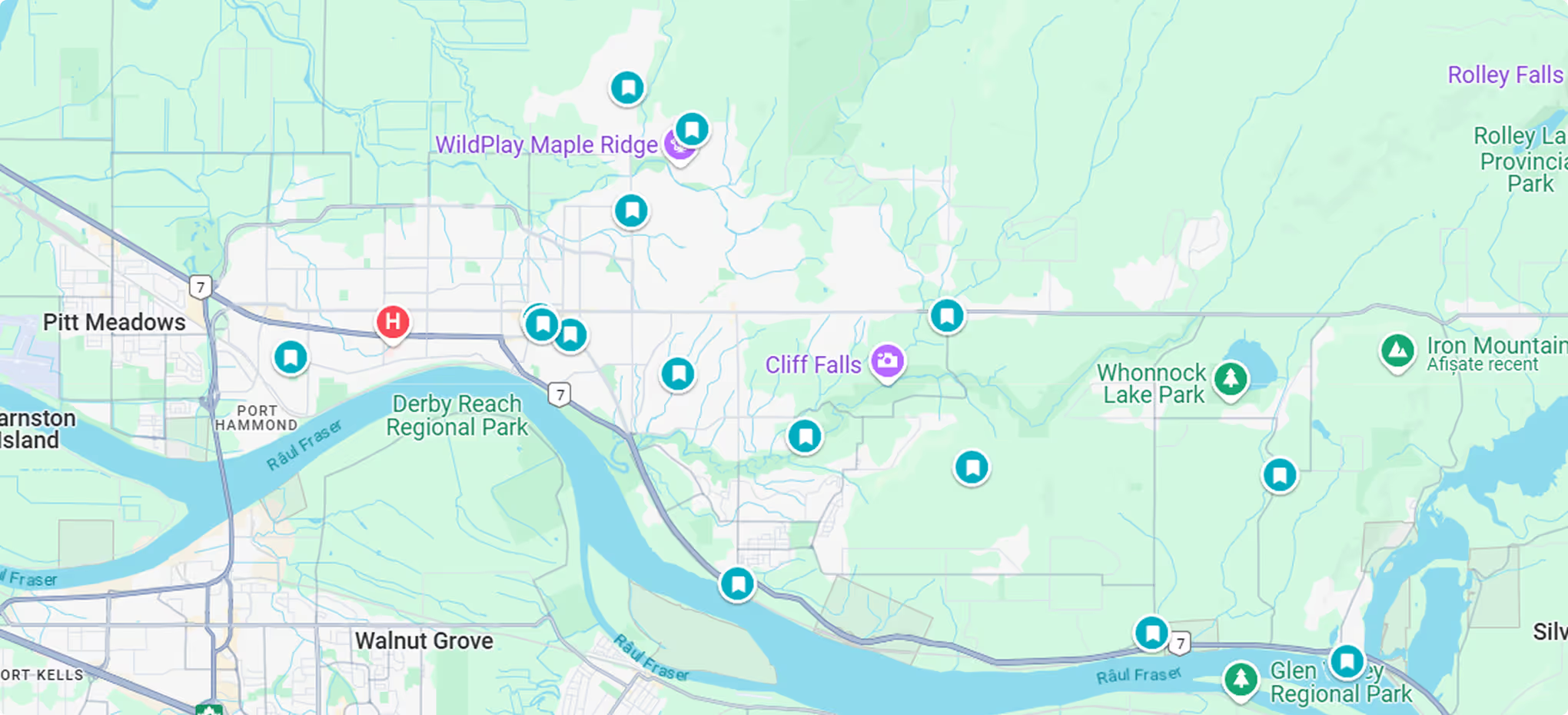Don't Let Your Home Flood: Mastering Burst Pipe Repair
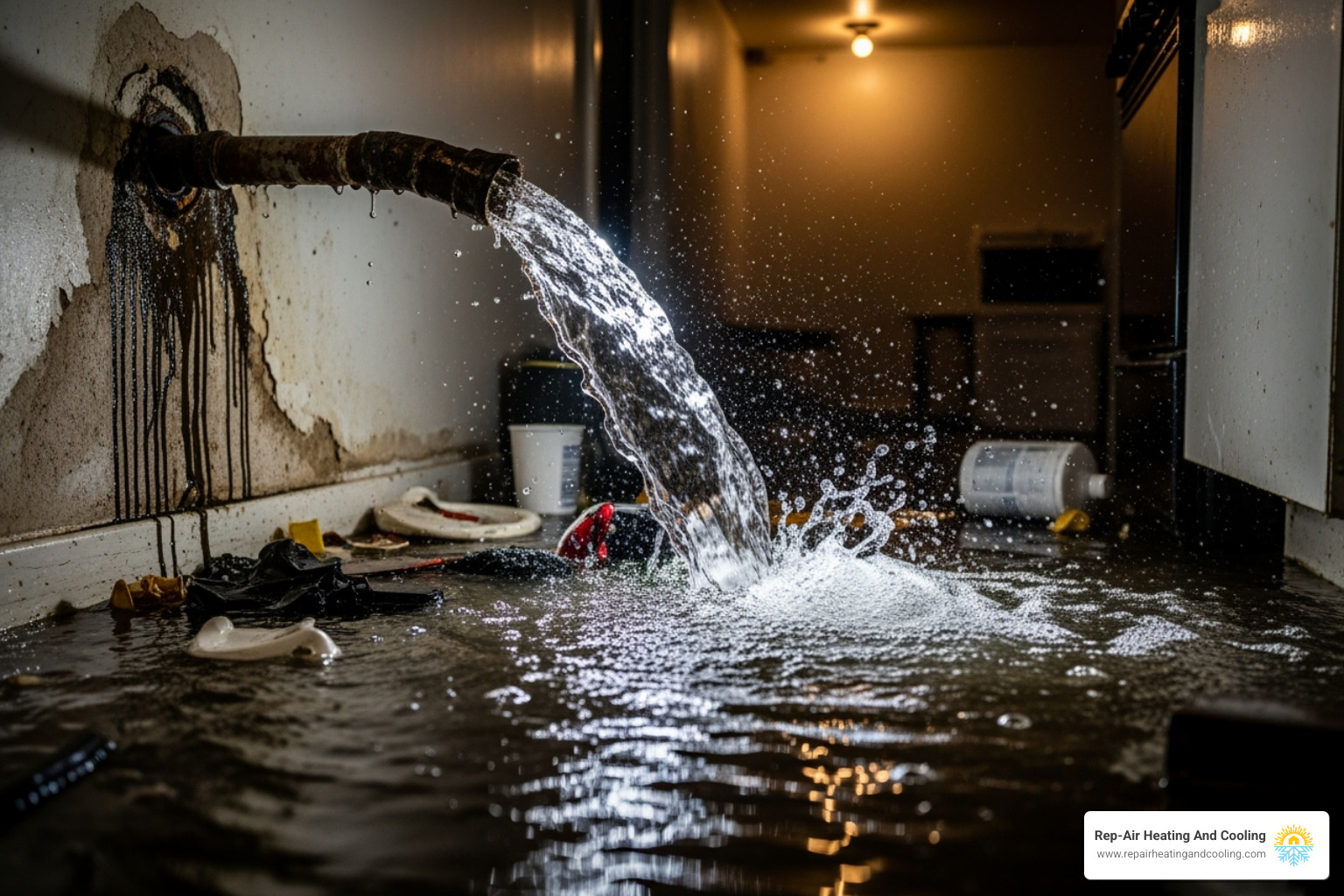
When Every Second Counts: Understanding Burst Pipe Emergencies
Burst pipe repair begins with quick action to prevent a manageable problem from becoming a catastrophic flood. Acting within minutes can save your home from thousands of dollars in water damage.
Quick Action Guide for a Burst Pipe:
- Shut off the main water supply: Find your main shut-off valve and turn it clockwise to stop the water flow immediately.
- Turn off electricity: If water is near electrical outlets or appliances, shut off power at the breaker box to prevent electrocution.
- Call a professional plumber: Contact an emergency plumber to assess and repair the damage permanently.
A burst pipe can happen without warning, leading to serious water damage, mold growth, and costly repairs. Common causes include freezing temperatures, aging or corroded pipes, high water pressure, and accidental damage. Understanding how to respond quickly and knowing when to call for help can make all the difference between a minor inconvenience and a major disaster.
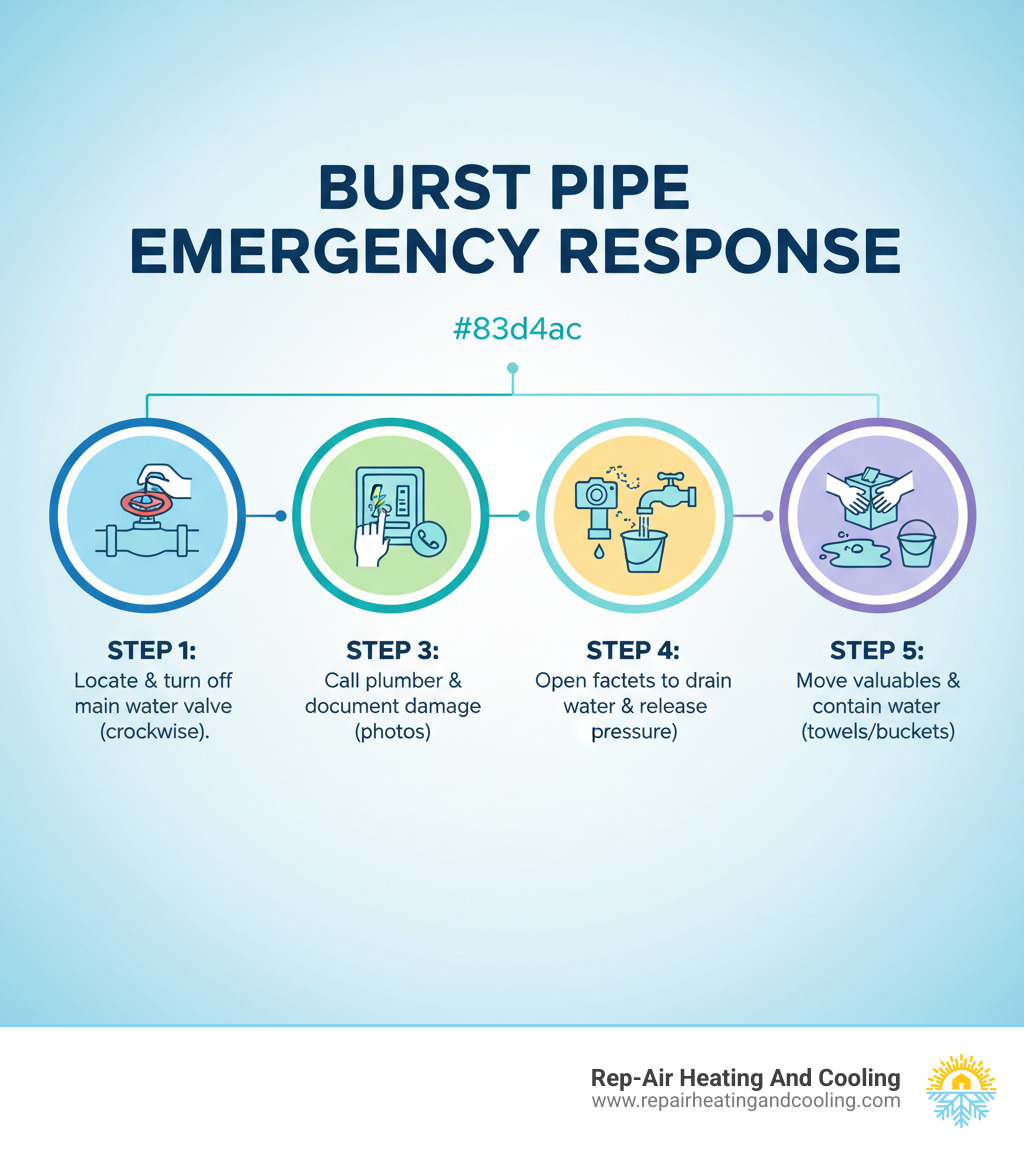
Burst pipe repair terms at a glance:
First Response: What to Do When a Pipe Bursts
When a pipe bursts, it's an emergency. Water can spray everywhere, causing panic. The key is to act quickly and methodically to prevent serious water damage and long-term issues like mold growth.
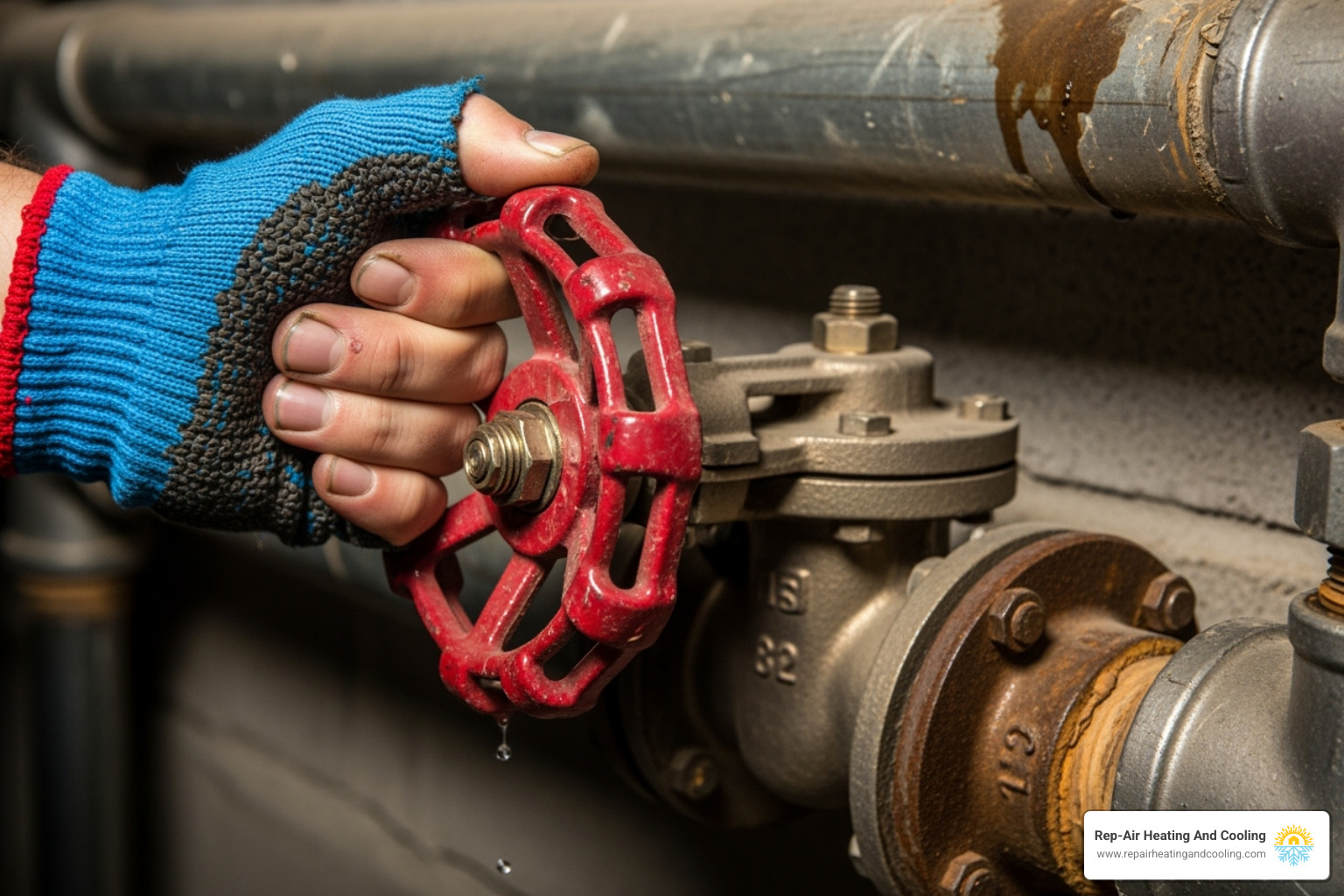
Step 1: Shut Off the Main Water Supply
This is your top priority. Find your main shut-off valve, which controls all water entering your home. Look for it near your water meter, on a foundation wall in the basement, in a utility closet, or in an underground box near the street. It will have either a round handle (gate valve) or a lever (ball valve). You might also have a stop and waste valve that allows you to drain the pipes after shutoff.
Turn the valve clockwise until it stops. If it's a lever, turn it perpendicular to the pipe. Don't force a stuck valve. Once the water is off, open all faucets throughout the house to drain remaining water and release pressure. If you can't find the valve or it won't budge, contact your local municipality to shut off water at the property line.
Step 2: Assess the Situation and Ensure Safety
With the water off, focus on safety and damage control.
- Address Electrical Hazards: Water and electricity are a deadly mix. If the burst pipe is near outlets, appliances, or your breaker box, shut off power to the affected area. If there's significant pooling water, shut off power to the entire house.
- Protect Your Belongings: Move furniture, electronics, rugs, and other valuables away from wet areas as quickly as possible.
- Contain and Remove Water: Use buckets, mops, towels, or a wet/dry vacuum to remove standing water. The faster you dry the area, the lower the risk of extensive damage and mold, which can grow in as little as 24-48 hours.
- Document Everything: Take photos and videos of the burst pipe and all water damage to walls, floors, ceilings, and personal items. This documentation is crucial for your insurance claim.
Step 3: Identifying the Signs of a Burst Pipe
Sometimes a burst pipe is obvious, but other times the signs are subtle. Knowing what to look for can help you catch a problem early.
- Low water pressure: A sudden drop in flow from faucets or showers can indicate a leak.
- Discolored water: Rusty or brown water may signal internal pipe corrosion, a precursor to a burst.
- Strange sounds: Hissing, spraying, or gurgling noises from walls or floors often mean water is leaking.
- Wet spots on walls or ceilings: Look for damp patches, stains, or bulging drywall.
- Damp drywall or flooring: Unexplained wetness on carpets, floorboards, or soft drywall needs immediate investigation.
- Unexplained high water bills: A sudden spike in your water bill without a change in usage points to a hidden leak. Our article on Why Home Water Pressure Is Low can offer more insight.
Understanding the "Why": Common Causes and Prevention
Understanding what causes pipes to burst is the first line of defense. When you know the risks, you can take proactive steps to protect your home and avoid the stress of burst pipe repair. For guidance on one of the most common threats, see our article on How to Prevent Frozen Pipes.
Why Do Pipes Burst?
Pipes fail for several specific reasons:
- Freezing temperatures: This is the number one culprit. When water freezes inside a pipe, it expands with immense force (over 2,000 psi), causing rigid pipes like copper to crack or split.
- Aging and corroded pipes: In older homes, galvanized steel pipes can rust from the inside out. This thins the pipe walls, making them fragile and prone to bursting under normal water pressure.
- High water pressure: Pressure above the typical 40-80 psi range puts constant stress on your entire plumbing system, which can lead to a burst at a weak point.
- Physical damage: Accidentally hitting a pipe during renovations or landscaping can cause immediate or future failure. Even a home's foundation settling can stress pipes.
- Severe clogs: While less common, a major blockage can cause pressure to build up behind it, potentially bursting a pipe that is already weakened.
How Pipe Material Affects Risk
The material of your home's pipes plays a huge role in its vulnerability to bursting.

| Pipe Material | Durability & Lifespan | Freeze-Resistance | Common Issues & Repair Notes |
|---|---|---|---|
| Copper | Excellent (50+ years), corrosion-resistant | Rigid, prone to bursting when water freezes and expands | Soldering or push-to-connect fittings for repair. Can be costly. |
| PEX (Cross-linked Polyethylene) | Excellent (25-40 years), flexible | Highly resistant to freezing and bursting due to flexibility | Cost-effective, easy to install with crimp or push-to-connect fittings. Not suitable for outdoor exposure (UV). |
| Galvanized Steel | Good (20-50 years), but prone to internal corrosion | Rigid, prone to bursting when water freezes and expands | Common in older homes (1970s). Internal rust and mineral buildup reduce water flow and increase burst risk. |
| CPVC (Chlorinated Polyvinyl Chloride) | Good (25-40 years) | Rigid, prone to bursting when water freezes and expands | Similar to PVC but handles hot water. Can become brittle with age. |
| PVC (Polyvinyl Chloride) | Good (25-40 years), but not for hot water or high pressure | Rigid, prone to bursting when water freezes and expands | Affordable, easy to install. Used for cold water lines and drains. |
Copper pipes are durable but their rigidity makes them vulnerable to splitting when water freezes. PEX pipes are a modern, flexible alternative that can expand with freezing water, making them highly burst-resistant. Galvanized steel pipes, common in older homes, corrode over time, leading to reduced water pressure and a high risk of failure. If you have galvanized pipes, replacement is often a better long-term solution than repair.
Proactive Prevention to Avoid a Disaster
The best burst pipe repair is the one you never have to do. A few preventative measures can save you from water damage and stress.
- Insulate your pipes: Use foam insulation sleeves on pipes in vulnerable areas like basements, crawl spaces, attics, and garages.
- Maintain a consistent indoor temperature: Keep your thermostat at least 13°C (55°F), even when you're away. Open cabinet doors under sinks to allow warm air to circulate around pipes.
- Let faucets drip: During extreme cold, a slow drip from hot and cold taps keeps water moving, making it harder to freeze and relieving pressure.
- Drain outdoor spigots: Before winter, disconnect hoses, shut off the water supply to outdoor faucets, and open the spigots to drain any remaining water.
- Schedule regular maintenance: A professional plumber can spot aging pipes, corrosion, or pressure issues before they cause a burst. Our guide to Common Plumbing Problems Solved offers more tips.
- Consider smart home technology: Low-temperature sensors and water leak detectors can provide early warnings, giving you time to act before a small issue becomes a major disaster.
A Guide to Temporary and Permanent Burst Pipe Repair
You've controlled the immediate crisis. Now, it's time to decide: can you handle the burst pipe repair yourself, or should you call a professional? The answer depends on your skills, tools, and the extent of the damage.

Essential Tools and Materials for DIY Repair
Having a burst pipe repair kit ready can make an emergency manageable. Key items include a quality pipe cutter, safety glasses, steel wool or emery cloth for cleaning, and a pipe repair clamp for temporary fixes. For permanent repairs, you'll need either push-to-connect fittings or a soldering kit like the LEXIVON Multi-Function Soldering Kit with lead-free solder and flux. Always keep a fire extinguisher nearby when soldering.
Method 1: The Quick Clamp Fix (Temporary)
For an immediate, temporary stop to a leak, a pipe repair clamp is your best friend. This is a great solution for a burst pipe repair while you wait for a plumber or gather materials for a permanent fix.
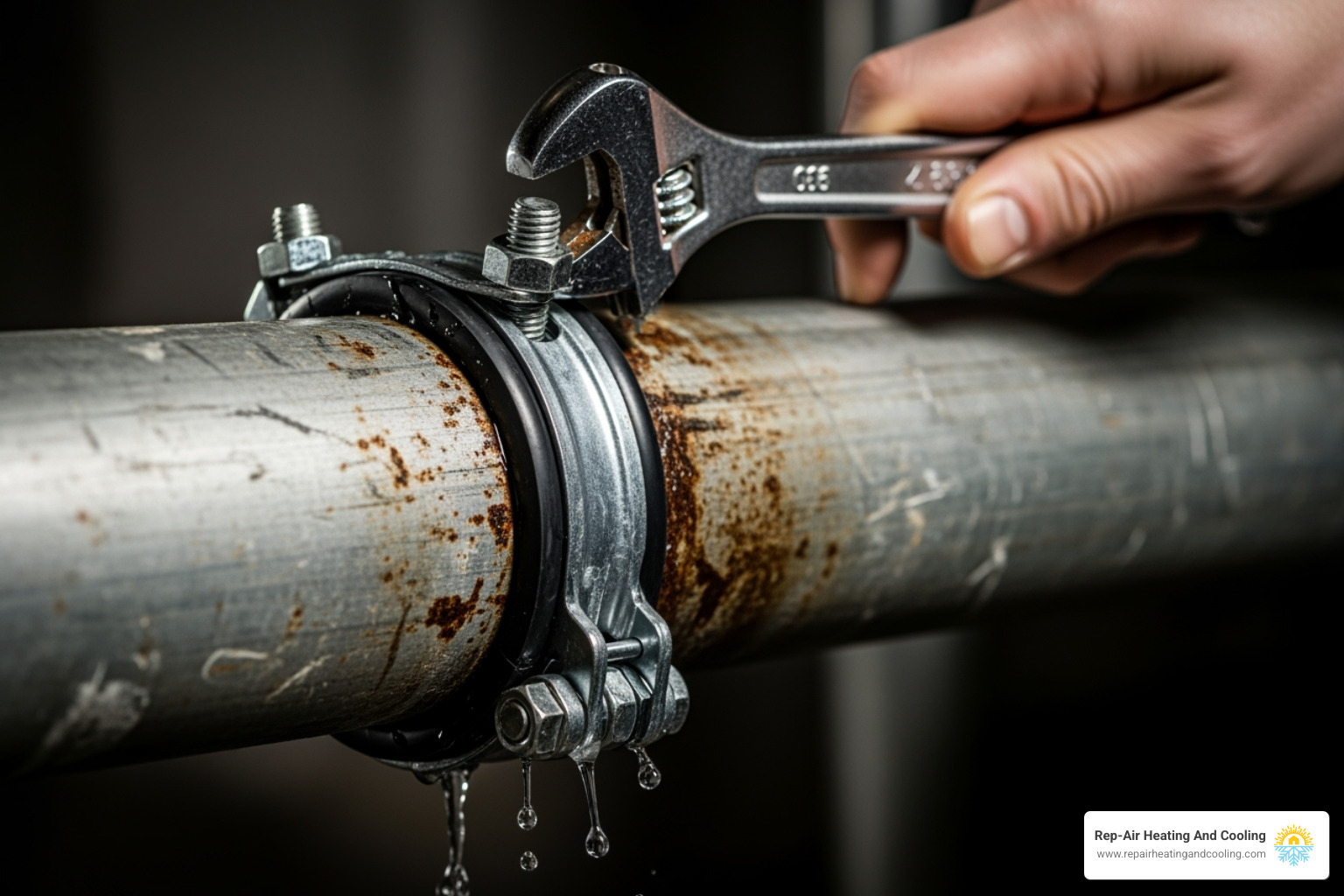
Wipe the pipe dry around the leak. Position the clamp's rubber sleeve over the damaged area, ensuring it's fully covered. Tighten the clamp securely according to the manufacturer's instructions to create a temporary watertight seal. In a pinch, a piece of thick rubber secured tightly with hose clamps can also work.
Method 2: The Push-to-Connect Solution for burst pipe repair
Push-to-connect fittings have revolutionized DIY plumbing. They work on copper, PEX, and CPVC pipes without soldering or special skills, making them ideal for beginner-friendly burst pipe repair.
- Cut the Pipe: Use a pipe cutter to remove the damaged section with clean, straight cuts.
- Clean and Deburr: Use steel wool or a deburring tool to smooth the cut pipe ends. This is crucial for a leak-proof seal.
- Mark and Push: Mark the insertion depth on the pipe. Firmly push the fitting onto the pipe until it clicks into place at your mark.
- Connect and Test: Cut a new piece of pipe to bridge the gap, mark it, and push it into the other side of the fitting. Slowly turn the water back on and check for leaks.
Method 3: Soldering a Copper Pipe for burst pipe repair
Soldering is the gold standard for a permanent copper burst pipe repair, creating a durable, long-lasting joint. This method is more advanced and requires comfort with an open flame.
- Cut and Clean: Cut out the damaged section. Use steel wool or emery cloth to polish the outside of the pipe ends and the inside of your new copper couplings until they shine.
- Apply Flux: Apply a thin, even coat of soldering flux to all cleaned surfaces. This helps the solder flow and bond correctly.
- Assemble and Heat: Assemble the new pipe section with the couplings. Heat the joint evenly with a torch, keeping the flame moving. The solder should melt on contact with the hot pipe, not the flame.
- Solder and Cool: Touch the solder to the joint and let capillary action draw it in, creating a complete seal. Let the joint cool naturally before restoring water pressure and checking for leaks.
Navigating the Aftermath: Insurance and Professional Help
You've handled the immediate crisis, but a burst pipe repair is often just the beginning. Dealing with water damage and insurance can be overwhelming, and it's important to know when to call in the pros.
When to Call a Professional Plumber
While DIY is satisfying, some plumbing jobs are best left to professionals. Call for help in these situations:
- Inaccessible Pipes: If the pipe is behind walls, under floors, or in a hard-to-reach corner, plumbers have specialized equipment to access it with minimal damage.
- Major Flooding: For widespread water, professionals can manage both the pipe repair and coordinate water extraction services.
- Lack of Tools or Confidence: A botched repair can cause more damage. If you're unsure or ill-equipped, calling a pro is the smartest move.
- Older or Complex Plumbing: Professionals understand the intricacies of older systems and can identify underlying issues that may have caused the burst.
- Recurring Leaks: If you've had multiple bursts, it signals a systemic problem like corrosion or high water pressure that requires an expert diagnosis.
Beyond the pipe, you may need water damage restoration services to dry structures and prevent mold. Our article on Fix Ceiling Water Spots can help with some aftermath issues. For more insights, see our guide on Professional Plumbing Service Benefits.
Understanding Your Homeowner's Insurance
Understanding your insurance policy can save you thousands of dollars.
Most standard homeowner's policies cover sudden and accidental water damage from a burst pipe. This typically includes damage to your floors, drywall, and belongings. However, the policy often does not cover the cost of repairing the pipe itself. Some policies may cover the cost of accessing the pipe (e.g., opening a wall), but the repair is usually your responsibility.
Coverage is generally denied for damage resulting from long-term neglect, such as a slow leak you failed to address. This is why thorough documentation is critical. The photos and videos you took of the burst pipe and resulting damage are your best evidence for a smooth claims process.
Contact your insurance provider as soon as the immediate emergency is under control. They will guide you through their specific process and what they require to file a claim.
Frequently Asked Questions about Burst Pipe Repair
Dealing with a burst pipe repair can be stressful. Here are answers to the most common questions we hear from homeowners.
How long does it take to fix a burst pipe?
Repair time varies. A simple fix on an exposed pipe might take a plumber a few hours. However, the timeline can extend significantly if the pipe is hard to access or if there is major water damage. Factors influencing the time include:
- Accessibility: A pipe behind a wall or under concrete takes much longer to reach.
- Extent of Damage: The pipe repair may be quick, but water extraction and drying can take days or weeks.
- Pipe Material: Soldering copper takes more time than using push-to-connect fittings on PEX.
Who is responsible for a burst pipe, the homeowner or the city?
This depends on the pipe's location. As a homeowner, you are responsible for all pipes inside your home and the water service line running from your house to your property line. The city or municipality is responsible for the water main in the street and the pipe leading from that main to your property line. If a pipe bursts on your property, the repair is your responsibility.
Can I repair a burst pipe myself?
Yes, in some cases. Temporary fixes with a pipe clamp are very doable for most people. Simple permanent repairs on an accessible pipe using push-to-connect fittings are also within reach for a handy DIYer with the right tools.
However, you should call a professional for any of the following:
- The pipe is hidden behind walls or under concrete.
- You are dealing with major flooding.
- You lack the proper tools or confidence for the job.
- The repair involves soldering, which requires skill and safety precautions.
Knowing your limits is smart. A botched DIY repair can lead to a much more expensive problem. At Rep-Air Heating and Cooling, we're here to help whether you need guidance or want our experienced team to handle the entire repair.
Conclusion
When a pipe bursts, every second counts. You are now equipped with the knowledge to handle this emergency, from the critical first steps of shutting off the water supply and ensuring safety to understanding the causes and prevention methods. Simple actions like insulating exposed pipes and regular maintenance can save you from the stress and expense of a burst pipe repair.
We've explored both DIY fixes and highlighted when it's best to call a professional. While some repairs are manageable, there's no shame in asking for help with complex or hidden problems. Sometimes, calling a pro is the smartest and safest decision.
Here at Rep-Air Heating and Cooling, we treat every customer like family. We are here to help homeowners throughout the Lower Mainland, including Mission, Aldergrove, Burnaby, Surrey, and the surrounding communities we serve. Our team is ready to provide expert plumbing services whenever you need us.
Don't wait for a disaster. Our comprehensive maintenance plans can help you catch potential issues early, keeping your plumbing system in top shape.
For professional plumbing services in Mission and the surrounding areas, contact us today!
hear what our satisfied clients have to say
Neighbourhoods in the Fraser Valley
